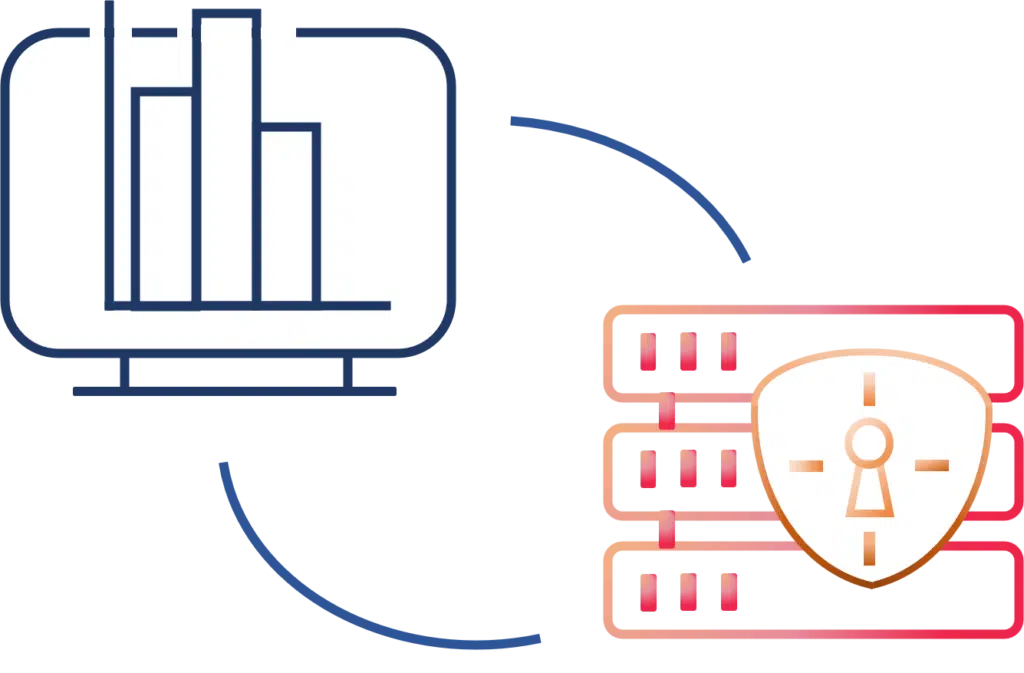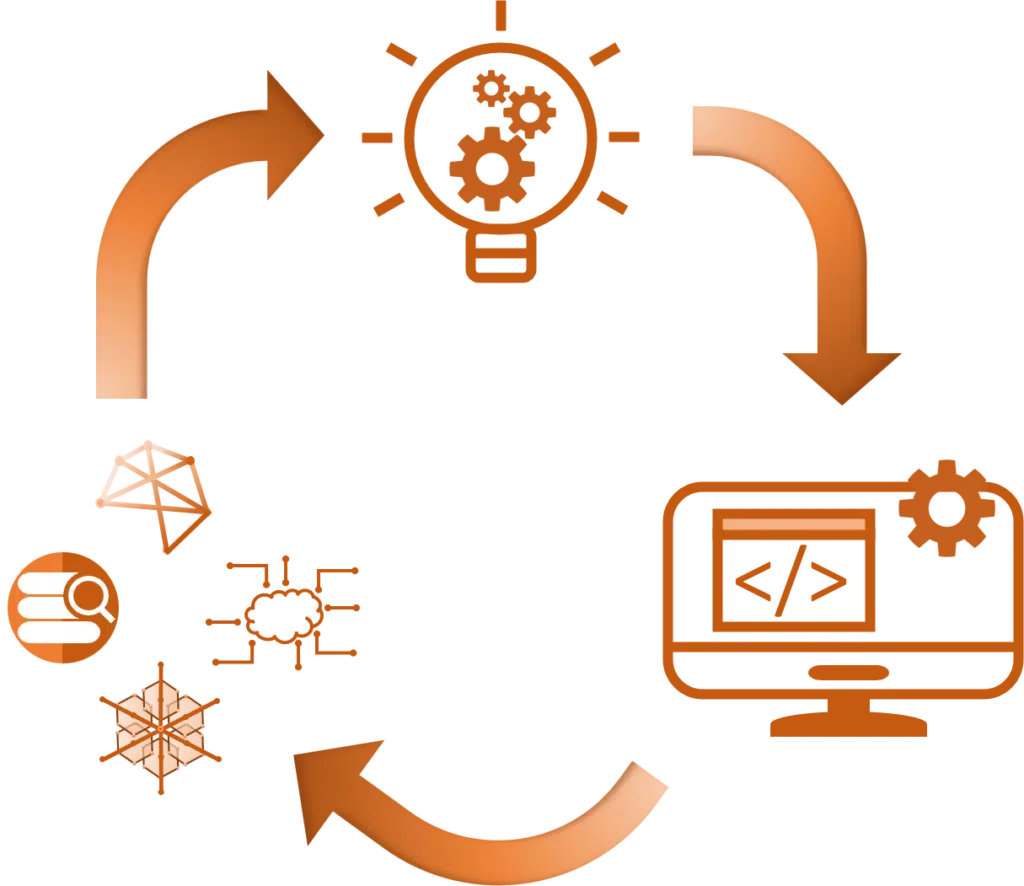Stealth Mission
Stealth was founded in 2006 by Distinguished UCLA professor Rafail Ostrovsky and a team of cryptography researchers and software developers. Our mission is to bring the latest techniques in cryptography research to software products, helping organizations to maximize the utility of their data while mitigating security and privacy risks. By leveraging our expertise in the latest theoretical advances in the field — many of which are pioneered by our own research efforts — we are able to build software solutions that provide unparalleled security, grounded in rigorous scientific proof, without compromising on performance and functionality requirements.

Traditional cybersecurity focuses on protecting data; e.g. using tools such as firewalls, encryption, and authenticated access. The traditional defenses fall short in two important ways:
- Information becomes siloed and regimented, limiting its utility
- When data does require access for permitted use, these accesses also admit vulnerabilities in the system that can be exploited, thus undermining the very security techniques that were put in place in the first place!
Stealth is a non-traditional cybersecurity company, and our approach to the above problems is fundamentally different. By using sophisticated data protection techniques, we are able to secure data in a way that does not require exceptions to be made when permitted usage is undertaken.

As a business leader, you’re at the forefront of digital transformation looking to improve customer experiences, monetize opportunities, and more. Achieving these outcomes is a challenge when any requisite data is held by another company that is willing to work with you to extract the value of joint data, but can’t share their unencrypted data without revealing confidential information.
Stealth solutions allow multiple organizations to collaborate and compute on their joint data, without exposing their individual data, models, or algorithms to one another (or anyone else). Namely, Stealth has developed an expansive suite of cryptographic technologies that facilitates collaboration between partner organizations, by protecting each individual organization’s sensitive data; for example:
- Secure Computation Engine: Sampling and anonymizing data isn’t always the best workaround as data is still identifiable and computations aren’t as precise. Stealth’s secure computation engine lets you analyze and share encrypted data without revealing your secrets.
- Secure Cloud Storage: As the amount of user information that is collected and stored continues to expand across all sectors and business, the need to securely store and protect sensitive information has never been greater. Stealth’s secure cloud storage capabilities offer unparalleled levels of security, while simultaneously allowing usage of private data in authorized ways in order to gain insights and provide value to businesses and customers alike.
- Secure Communication: While (virtual) connectivity between people has never been higher, so too is the vulnerability of communication lines between users, both domestically and abroad. Stealth has a number of solutions that provide protection to its users that allow for safe, anonymous, and robust lines of communication.
Stealth draws from decades of industry-leading research to generate novel approaches and new techniques in the development of software products that advance the state of the art in applied cryptography and cybersecurity. Our team includes PhDs in cryptography, computer science, and mathematics, and expert engineers recruited from top organizations including Apple, Google, and others. We also have a deep bench of academic consultants, who are helping to shape today’s landscape of cryptographic techniques and privacy-enhancing technologies.
Stealth leverages its unique position of access to the latest advances in cryptographic research and expert developers to produce state-of-the-art software that offers the most secure and efficient solutions to meet today’s challenges in data security. The output of our work includes:
- An extensive bibliography of publications in leading conferences and journals;
- Presenting R&D advancements at conferences, workshops, and industry days (visit our Newsroom);
- Software toolsuite implementing numerous cryptographic primitives as well as end-to-end functionality in support of our customers’ needs for searchable encryption, secure multiparty computation, and many more…
To date, our funding has come from government and industry sponsored programs designed to develop new solutions that can satisfy an existing or anticipated requirement, in terms of desired security, cost, functionality, and performance. We have not received external (e.g. VC) funding nor direct business contracts to provide product development and support. Consequently, we have developed an extensive suite of software tools that provide proof-of-concept functionality, and that have been (externally) deployed and tested in experimental environments. Most of the software tools we have built are modular and provide general purpose functionality, making it easy to selectively choose an appropriate combination of tools to build a custom solution to address the needs of new customers. As we continue to grow our business, we are actively seeking opportunities to transition our software prototypes to commercial products. See also our Project page for an overview of our existing prototypes we have developed.
Over the past decade and a half, we have developed an extensive and unrivaled collection of cryptographic solutions and tools. The resulting depth and breadth of our toolkit differentiates Stealth from many of our competitors. Since our founding, we have been awarded over a dozen federal contracts and more than $20M for prior and ongoing work from the NSF, DARPA, IARPA, ONR, NIST, AFRL, SCO, and NIWC Pacific, as well as private organizations including the Arnold Foundation and Algorand. More information can be found on our Projects pages.

Traditionally, we work with our customers by responding to a stated technology requirement or area of need with our ideas for how we would approach a potential solution. We then work closely with our customers through the standard software develop cycles of clarifying requirements, proposing and designing solution strategies (including generation of new research or protocol ideas, when necessary), implementing software and supporting tools, and finally integration and deployment in the customer’s system, whether this be on-premises, remote/Cloud, database system, etc. Often times this is an iterative process, as we test prototypes and controlled rollouts in sandbox environments, identifying new/updated requirements, evaluating performance and scalability, looking for opportunities for improvements, and generally testing our solution in the customer’s target framework/system.
As an example, we worked with SRI International to tackle the issue of privacy-preserving logistics in a disaster relief setting. Often times, disaster aid is provided by military ships from various countries, with different logistical and political postures. By using our secure matching technology, we were able to show how to allocate resources in a fair-yet-optimized manner while providing the much-needed confidentiality of capabilities and needs. Confidential multi-party logistics is just one example, work with us to find out what data privacy and security problems we can help you solve.
Stealth employs around a dozen full-time employees, many of whom hold a PhD in Cryptography or a related field, as well as working closely with around two dozen consultants who are leaders in cryptographic research. Collectively, we have authored hundreds of publications in top peer-reviewed journals and conferences, and team members have invented and/or advanced many of the cutting-edge cryptographic techniques being investigated and implemented in practice today — including our own work at Stealth — to generate the most secure and efficient protocols available to date. For example, Stealth team members have made substantial contributions in advancing research and implementation efforts in the following subfields of cryptography: Secure Multi-Party Computation (MPC), Private Information Retrieval (PIR) and Private Information Writing (PIW), Function Secret Sharing (FSS), Oblivious RAM (ORAM) and Garbled RAM (GRAM), Oblivious Pseudo-Random Functions (PRF), Fully Homomorphic Encryption (FHE), Oblivious Transfer Extension, Searchable Public-Key Encryption and Searchable Symmetric Encryption, Key Exchange, Batch Codes, Byzantine Agreement (BA) and Distributed Consensus, Blockchain and Distributed Ledger Technologies (DLT), Zero-Knowledge Proofs (ZK), and Secure and Anonymous Communication in adversarial networks.




